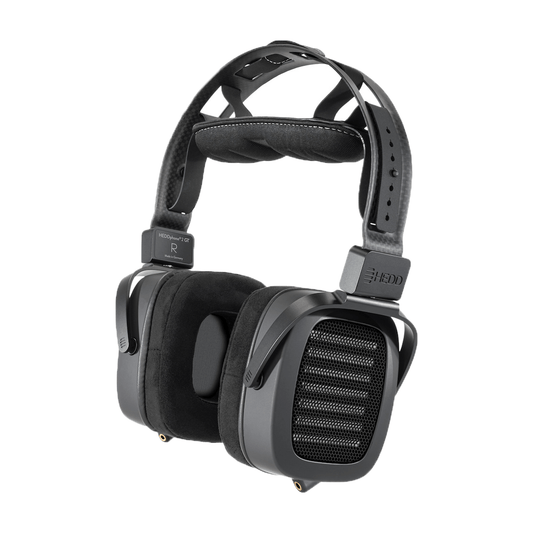Thin-Ply Carbon: Redefining the Dynamic Driver
For more than four decades, HEDD has been driven by the idea that transducer design defines sound. The same spirit that led to the development of our Air Motion Transformer driver now guides a new chapter: the exploration of dynamic driver technology.
The HEDDphone® D1 is the first headphone in the world to feature a Thin-Ply Carbon Diaphragm (TPCD), a breakthrough that reimagines how a dynamic driver can behave. Thanks to TPCD we are able to bring the clarity, balance, and accuracy of professional monitoring into the world of personal listening.
Innovation Through Collaboration
The story of the Thin-Ply Carbon Diaphragm begins with a shared vision between HEDD and Sweden's Composite Sound, a spin-off of Oxeon who created TeXtreme® Technology based on thin-ply and spread tow principles.
In 2016, Oxeon successfully applied this new technology to the audio space, introducing a new type of diaphragm that could be used in loudspeakers including for tweeters, compression drivers, and woofers. This success led Oxeon to create Composite Sound as its own company to accelerate the development of TPCD technology and its uses.
The idea of using Thin-Ply Carbon in headphone design first arose eight years ago as HEDD and Composite Sound began discussions. What started as a concept gradually evolved through research, material studies, and close collaboration between the two companies, combining HEDD’s 40 years of acoustic expertise with Composite Sound’s mastery of Thin-Ply Carbon engineering and application.
Thin-Ply Carbon is not ordinary carbon fiber. Built from ultra-thin layers, it offers a rare combination of stiffness, lightness, and resilience. Its properties make it suitable for applications where every gram and every vibration matter such as Formula 1, where it is used for ultra-rigid, lightweight structural components, and aerospace, where it offers reliability beyond the boundaries of the planet such as in NASA’s Ingenuity Mars Helicopter.
After close to a decade of ideation and testing, HEDD and Composite Sound are excited to showcase an innovative approach to the use of Thin-Ply Carbon Diaphragms in dynamic driver design for headphones, realised in the HEDDphone® D1.
Engineering TCPD for Headphones
Every dynamic driver faces the same challenge: at certain frequencies, its diaphragm begins to flex, creating distortion known as cone break-up. Traditional solutions to this common issue in headphone design rely on adding stiffness or damping materials. However, both come at the cost of speed or transparency thus impacting the quality of reproduction.
The Thin-Ply Carbon driver as used in the HEDDphone® D1 takes a different path. The diaphragm is structurally engineered to control resonance within the material itself, removing the need for traditional damping layers at the diaphragm level.
Unlike conventional dynamic driver diaphragms with uniform thickness, HEDD approached implementing TCPD technology in headphone design by considering a multi-dimensional architecture that covers four dimensions:
- Geometry (2D): the overall shape and contour
- Radial stiffness profile (3D): how material density changes across the surface
- Directional variation (4D): how the diaphragm behaves differently along its perimeter
This allows the diaphragm in the D1 to move with remarkable precision and offer faster, cleaner, and more stable reproduction across the entire audible spectrum.
The Sound of the HEDDphone® D1
Clarity and Balance
The D1’s TPCD driver delivers a new level of sonic clarity and tonal accuracy, revealing detail and realism that are rare among dynamic headphones. It bridges the intimacy of headphone listening with the precision of studio monitors.
Comfort and Immersion
Thanks to the diaphragm’s low mass and compact architecture, the driver remains light and responsive, enabling long, fatigue-free sessions and a natural sense of immersion.
Compatibility and Scalability
With 32 Ω impedance and 100 dB sensitivity, the D1 connects easily to most playback devices, while its performance scales gracefully with premium amplification.
From the Air Motion Transformer to the Thin-Ply Carbon Diaphragm, HEDD’s pursuit has always been the same: to build transducers that move air with greater accuracy, speed, and honesty. The use of TPCD in the D1 marks the next step in that journey, carrying our philosophy of clarity into the realm of dynamic sound.





